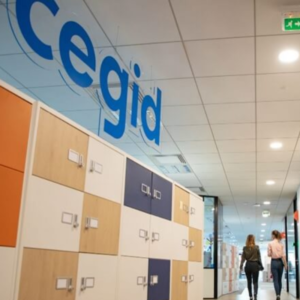By Octavio Ballesta
The current boom in social and collaboration technologies coincides with the proliferation of mobile devices that are increasingly versatile, sophisticated and useful. The emergence of new and more expressive data analytics powered by big data is complementary to the almost omnipresent access to data and information residing in the cloud.
Welcome to the knowledge age, folks! Accept that from now on, any reference to the industrial age is relegated to the most glorious pages of our books on business history. We are witnessing the advent of a new social, political and economic order, now that technology has taken the place of honour as an important vector for individual, business and social transformation.
The digital revolution in the social and personal domain
Our dynamic relationship with technology—now more expressive, frequent and versatile—has had a profound impact on the course of our daily lives. In this light, we have the opportunity to learn at greater speed about a much larger number of sources of information and knowledge. We make better decisions thanks to gathering evidence that we previously lacked. We are far more productive by several degrees of magnitude due to the support that information technology provides us. We now communicate in a more timely and effective manner with our social and professional environment.
The constant progress experienced by the giddy technology market offers truly unsuspected opportunities for transformation. It has not only improved our quality of life in global environments with ever-increasing connectivity, but has also served to transform our organizations, promoting practices and processes that contribute to improving their ability to shake markets and please customers who are better informed and more demanding.
In a formula, in which it is possible to add up satisfaction and engagement of people with key input from state-of-the-art technology, we will be able to build innovative cultures. Important to leading organizations in the knowledge era, such cultures facilitate the design of collaborative work environments where activities like working, learning and developing professionally—other than being stimulating and fun—have a genuine purpose and transcendental meaning.
The technological revolution, operating across multiple devices and media has enriched our options for communicating and interacting with other people, no matter where they are. Now we have access to diverse and unexpected possibilities of interaction with our relatives, acquaintances, friends and colleagues. We can strengthen emotional ties, enrich our nucleus of social relationships, learn even more about what other people do, and as a result, build a more and more solid digital presence, as we expand our sphere of action and influence, as the good social beings we are.
We access multiple resources of collective intelligence in order to learn and improve our skills and competencies in areas of human knowledge we are passionate about and which captivate our attention. The opportunities within our reach for managing our personal brand and positioning ourselves favourably in a labour market have multiplied. Besides being more competitive and diverse, this labour market is now global.
The technological revolution in business
The technological revolution underway in the business field has not had an equivalent impact to the one arising in our society and in our personal environment.
The ability to use technology as an important agent of innovation to generate significant business value has been wasted in most companies. Limitations inherent to a corporate culture unfamiliar with the phenomena of market transformations have been enforced. Formidable resistance counters the opportunity to engineer business transformation, using pragmatic market and business criteria, on account of the predominance of a management style that is frankly conservative and reactive. Such a company is a loser in a very competitive environment, upon reinforcing the validity of out-of-date and obsolete management practices.
The convergence at the workplace of three generations of professionals with dissimilar interests and aspirations could lead to a creative tension, which in its most positive dimension favours gradual deployment of technologies. Managed in an innovative culture, such technologies would be suitable for creating opportunities for business transformation, enough to signify a favourable edge in a highly competitive market and business environment like now.
Policies blocking free internet usage in the workplace; blatantly banned access to social networks during working hours; plethora of evidently obsolete technology assets; poor integration of applications and systems with the company’s running operations and business—all deeply affect motivation and engagement among employees who are increasingly frustrated and disenchanted as they are unable to rely on technology to realize their potential talent and express their peak productivity. It is disheartening for an inquisitive and creative professional that in the business environment access to the latest generation technology tools is lacking, when they enjoy such tools with little restriction in their personal sphere of action.
Many organizations reject investment in next-generation technologies when they are considered irrelevant. These are conceived as costs that should be controlled and reduced, or they are associated with misleading factors addressing intrinsic individual involvement in productive work.
These organizations hence lose the precious opportunity to enhance both individual and collective learning among talented employees, whose productivity and engagement drop regardless of their disposition and talent. Under circumstances of open disadvantage, they will face challenges embedded in volatile, uncertain, complex and ambiguous scenarios within this knowledge age.
Long-term success of this era’s company depends, as never before, on its unique ability to reinvent and transform at a faster rate than the rest of the companies, frantically competing in markets experiencing more and more accelerated and unpredictable transformation dynamics.
The HR-driven technological revolution
Investment in technology enablers is vital for business transformation. This will boost innovation processes which are important for a competitive company to be successful in the knowledge age.
Right in this context strategic initiatives strongly favour investment in the latest generation technologies. In a scenario with growing digitalization of companies, what emerges as a strategic mandate of the highest priority is effective management of knowledge contributions. Such knowledge is improved and shared by a talent force committed to the company, who are well immersed in their roles, identify with their leaders, and are motivated to make key contributions to benefit the society they are indebted to and the markets they serve.
It is not enough to ensure that the recruitment and selection area regularly fine tunes practices and tactics to attract and capture talent and leaders of promise that a competitive company needs for planning their expansion and growth. Consistent with this perspective, the company could face serious difficulties for motivating and developing their people in roles where they can bring most value as they are more aligned to their abilities, interests and skills. Retaining talent is key to help people make the commitment to stay and keep on in a company that offers exciting opportunities for personal growth and professional development.
Managing wellbeing and engagement is essential to align people management processes to the execution of the business strategy, and to strengthen the long term competitiveness of the company. For this purpose, it is important to push for the implementation of cutting-edge technologies to enhance the development, involvement, motivation and engagement of those who will be the main asset of any organization, its people.






